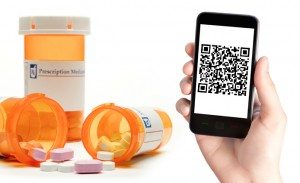 Counterfeit pharmaceuticals purchased online are a dangerous business, and authentication technology has become an essential part of the effort to combat the problem. Many industries have enjoyed success with QR (Quick Response) barcodes, and they are now being added to pharmaceutical packaging. So far, they have proven to be effective in providing a way for pharmaceutical companies, governments, and consumers to verify whether a drug is the real thing or a potentially unsafe fake.
Counterfeit pharmaceuticals purchased online are a dangerous business, and authentication technology has become an essential part of the effort to combat the problem. Many industries have enjoyed success with QR (Quick Response) barcodes, and they are now being added to pharmaceutical packaging. So far, they have proven to be effective in providing a way for pharmaceutical companies, governments, and consumers to verify whether a drug is the real thing or a potentially unsafe fake.
QR codes are two dimensional codes which can be read by smart phones, and are an inexpensive way to share relevant information with customers who want more than just the general content information found on labels. QR codes allow patients direct access to a product website so that they can learn more about the product, including the correct dosage and other necessary safety information. Pharmacies and medical professionals also use QR codes to keep track of medications and become aware of drug abuse issues, should they arise. With the addition of software, QR codes and ID codes are even being used by consumers themselves to authenticate drugs, and by transit companies to track them.
In the past, pharmaceutical companies used printed marks and optical tags on their packaging to combat counterfeiting. It has been found, however, that these markings can be faked by sophisticated counterfeiters and cannot always be used to verify the drug ingredients. There is a similar concern with regard to QR code technology. In order to combat this issue, additional security codes are typically embedded into industry QR Codes, providing something even those in the counterfeit drugs manufacturing industry are unable to hack.
According to a recent study by Arbitron and Edison research, 2% of Americans with smart phones scan QR codes at least once a day, which translates to a potential reach of approximately 2.75 million people. At CSIP, our hope is that with their extensive reach, ease of implementation, and enhanced security, QR codes can be a significant part of the solution to protect supply chains, save lives and help alleviate concerns about fake drugs online.
####
The Center for Safe Internet Pharmacies (CSIP) and our 13 member companies have the shared goal of helping address the growing problem of consumer access to illegitimate pharmaceutical products on the Internet. Continue to read this blog for updates on CSIP’s education, enforcement and information-sharing efforts.

